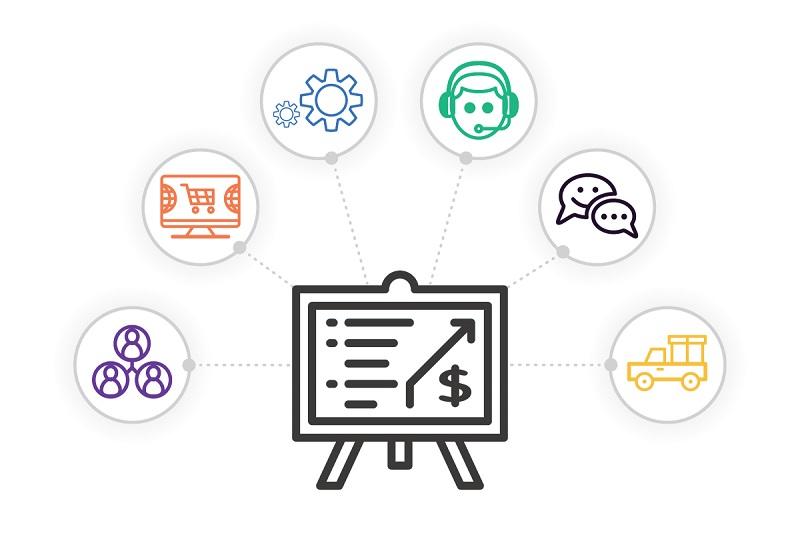US System Integration Market to Reap Excessive Revenues by 2024 - 2032

US System Integration Market Overview:
The US System Integration Market Share is a bustling ecosystem characterized by its adaptability and innovation. With businesses across industries increasingly reliant on integrated solutions to streamline operations and enhance efficiency, the demand for system integration services continues to surge. From IT and telecommunications to healthcare and manufacturing, organizations are leveraging integration to unlock synergies, optimize processes, and stay competitive in an ever-evolving landscape.
Major Market Players:
Navigating the US system integration landscape, one encounters a diverse array of players, each contributing their unique expertise and capabilities. Industry giants such as IBM, Accenture, and Deloitte dominate the market with their extensive portfolios and global reach. These titans offer end-to-end integration solutions encompassing consulting, implementation, and managed services, catering to the needs of enterprises of all sizes.
Beyond the behemoths, a multitude of specialized firms carve out niches in specific verticals or technologies, providing tailored solutions to address niche requirements. Companies like Cognizant, Infosys, and Wipro excel in delivering domain-specific integration services, leveraging their deep industry knowledge and technical prowess to drive value for clients.
✔For Additional Details, Visit Here:
https://www.marketresearchfuture.com/sample_request/21756
Market Segmentation:
The US system integration market exhibits a nuanced segmentation reflective of the diverse needs and preferences of clients. Broadly categorized, these segments encompass industry verticals, integration types, and deployment models.
Industry verticals serve as a primary segmentation criterion, with system integrators catering to the unique requirements of sectors such as healthcare, finance, retail, and manufacturing. Each vertical presents distinct challenges and opportunities, necessitating tailored integration approaches to maximize value and address specific pain points.
Integration types further segment the market, encompassing various methodologies such as application integration, data integration, cloud integration, and enterprise service bus (ESB) integration. Depending on organizational priorities and IT landscapes, clients may opt for specific integration types to achieve desired outcomes efficiently.
Deployment models represent another dimension of segmentation, with options ranging from on-premises to cloud-based and hybrid solutions. Factors such as scalability, security, and cost-effectiveness influence deployment decisions, with organizations weighing the benefits of each model against their operational requirements and strategic objectives.
Market Drivers:
Several factors propel the growth of the US system integration market, shaping its trajectory and fueling demand for integration services. Chief among these drivers is the relentless pace of technological innovation, which continually introduces new systems, applications, and devices into the corporate ecosystem. As organizations seek to harness emerging technologies such as IoT, AI, and blockchain, the need for seamless integration becomes paramount to unlock their full potential and drive digital transformation.
Moreover, the increasing complexity of IT environments, exacerbated by legacy systems and heterogeneous architectures, underscores the importance of robust integration strategies. System integrators play a pivotal role in navigating this complexity, bridging disparate systems and facilitating interoperability to ensure smooth business operations.
Furthermore, the growing adoption of cloud computing represents a significant driver of integration demand, as organizations migrate workloads to cloud platforms to enhance agility, scalability, and cost-efficiency. Cloud integration services enable seamless connectivity between on-premises and cloud-based systems, empowering enterprises to leverage the benefits of hybrid IT environments while mitigating integration challenges.
Market Restraints:
Despite its growth prospects, the US system integration market faces certain constraints that warrant attention. Foremost among these is the pervasive threat of cybersecurity breaches, which poses a significant risk to integrated systems and sensitive data. As integration expands the attack surface, organizations must prioritize robust security measures and compliance frameworks to safeguard against cyber threats and regulatory non-compliance.
Moreover, budgetary constraints and resource limitations may hinder the adoption of comprehensive integration solutions, particularly among small and medium-sized enterprises (SMEs). The perceived complexity and cost of integration projects can deter investment, leading to suboptimal IT environments and missed opportunities for efficiency gains.
Additionally, interoperability challenges and vendor lock-in present ongoing obstacles to seamless integration, particularly in multi-vendor environments. As organizations grapple with disparate technologies and proprietary protocols, achieving true interoperability requires concerted efforts and standardization initiatives to promote compatibility and mitigate integration barriers.
Regional Analysis:
The US system integration market exhibits regional variations driven by factors such as economic activity, industry concentration, and technological maturity. Major metropolitan areas such as New York, San Francisco, and Chicago emerge as focal points of integration activity, fueled by their vibrant business ecosystems and concentrations of technology companies.
Moreover, regional disparities in industry verticals influence integration demand, with healthcare and finance hubs driving significant integration activity in regions such as the Northeast and Midwest. Meanwhile, technology-centric regions like Silicon Valley and the Research Triangle in North Carolina serve as hotbeds of innovation, driving demand for cutting-edge integration solutions to support dynamic startup ecosystems and corporate R&D initiatives.
Browse In-depth Market Research Report: https://www.marketresearchfuture.com/reports/us-system-integration-market-21756
- Questions and Answers
- Opinion
- Motivational and Inspiring Story
- Technology
- Live and Let live
- Focus
- Geopolitics
- Military-Arms/Equipment
- Seguridad
- Economy/Economic
- Beasts of Nations
- Machine Tools-The “Mother Industry”
- Art
- Causes
- Crafts
- Dance
- Drinks
- Film/Movie
- Fitness
- Food
- Juegos
- Gardening
- Health
- Home
- Literature
- Music
- Networking
- Other
- Party
- Religion
- Shopping
- Sports
- Theater
- Health and Wellness
- News
- Culture

